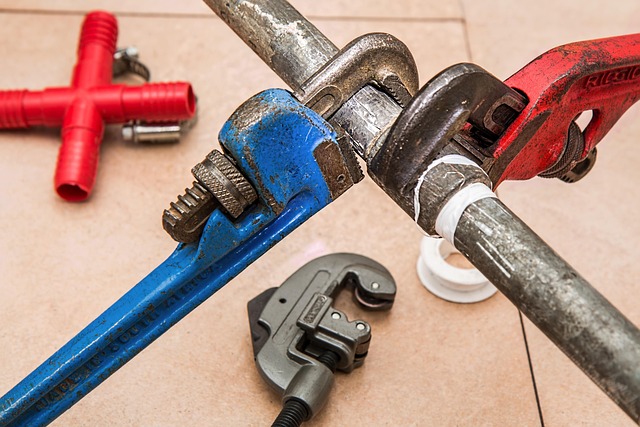Attic moisture issues, often overlooked, severely impact indoor air quality and home integrity due to mold growth caused by factors like insufficient ventilation, leaks, high humidity, or poor insulation. Prompt action is crucial to mitigate these problems, which can lead to health risks such as respiratory issues, allergies, asthma, and even neurological problems if left unaddressed. Regular inspections for water stains, mold, or musty odors, along with repairing leaks, improving ventilation, and ensuring efficient insulation, are essential steps to maintain optimal home air quality and prevent future health complications.
Attic mold is a silent invader that can significantly impact your home’s air quality. Understanding attic moisture issues, caused by various factors like inadequate ventilation or leaky roofs, is crucial for maintaining a healthy living environment. This article delves into the causes and consequences of attic moisture problems, explores their effect on indoor air quality, and highlights health risks associated with mold exposure. We provide practical strategies to identify and address these issues, ensuring a safer, healthier home.
- Understanding Attic Moisture Issues: Causes and Consequences
- The Impact of Mold on Indoor Air Quality
- Health Risks Associated with Attic Mold Exposure
- Identifying and Addressing Attic Moisture Problems
- Strategies for Improving Home Air Quality After Mold Removal
Understanding Attic Moisture Issues: Causes and Consequences

Attic moisture issues are a common yet often overlooked problem that can significantly impact indoor air quality. Understanding the causes and consequences is crucial for homeowners to address this concern promptly. Attic spaces, especially in regions with varying climates, can become breeding grounds for mold growth due to several factors. Insufficient ventilation, leaks from roofing or windows, high humidity levels, or poor insulation are primary contributors to attic moisture problems.
When left unaddressed, these issues lead to a range of negative outcomes. Excessive moisture promotes the development and proliferation of mold, which can then release spores into the living areas of a home. Inhalation of mold spores is linked to respiratory issues, allergies, and other health problems. Moreover, attic moisture can cause structural damage to the building, affecting the integrity of the roof, insulation, and supporting beams over time.
The Impact of Mold on Indoor Air Quality

Attic mold, often a result of hidden attic moisture issues, significantly impacts indoor air quality. Mold spores, once released into the air, can easily circulate throughout your home, affecting occupants’ health and well-being. Sensitivities to mold are common, leading to respiratory issues, allergy symptoms, and even exacerbating existing conditions like asthma.
The presence of mold also contributes to a degradation in air quality by producing volatile organic compounds (VOCs). These chemicals can further irritate the respiratory tract and cause discomfort, making it essential to address attic moisture problems promptly. Proper ventilation, source identification, and remediation are key steps to mitigate mold growth and ensure a healthier indoor environment.
Health Risks Associated with Attic Mold Exposure

Attic mold, often a result of hidden attic moisture issues, poses significant health risks to homeowners. When mold grows in isolated spaces like attics, it can release harmful spores into the air, which, if breathed in, can cause or exacerbate various respiratory conditions. These include allergies, asthma, and even chronic lung infections. Individuals with compromised immune systems are particularly vulnerable, as mold exposure may lead to severe health complications.
Moreover, prolonged exposure to attic mold can trigger other health issues such as headaches, fatigue, and irritable symptoms like sneezing and itching. Some types of mold also produce mycotoxins, which have been linked to neurological problems and memory loss. It’s essential for homeowners to address attic moisture problems promptly to mitigate these risks and ensure a healthy indoor environment.
Identifying and Addressing Attic Moisture Problems

Identifying and addressing attic moisture problems is a crucial step in maintaining optimal home air quality. Attic moisture issues can go unnoticed for extended periods, often due to their secluded location. However, signs such as visible water stains, mold growth, or a musty odor should raise immediate concern. Regular inspections are key; checking for leaks from roof areas, condensation on insulation, or any source of persistent dampness.
Once identified, these attic moisture issues require prompt action. It involves repairing any leaks, improving ventilation to reduce humidity, and addressing the underlying causes. Efficient insulation and proper air circulation can mitigate excessive warmth and moisture buildup. By taking these measures, homeowners not only improve indoor air quality but also create a healthier living environment, preventing potential health risks associated with mold and mildew.
Strategies for Improving Home Air Quality After Mold Removal

After successfully addressing attic mold, it’s crucial to implement strategies that enhance home air quality. The first step is to address any underlying attic moisture issues, as mold thrives in damp environments. Consider improving ventilation by installing exhaust fans or proper roofing to reduce humidity levels. Regular cleaning and maintenance are also essential; vacuum thoroughly using a HEPA-filtered vacuum to capture any residual mold spores.
Additionally, investing in an air purifier with a high-efficiency particulate air (HEPA) filter can significantly improve indoor air quality by trapping microscopic particles, including mold spores. Maintaining good ventilation and keeping the home free from excess moisture will prevent future mold growth, ensuring your family breathes easier in a clean and healthy environment.
